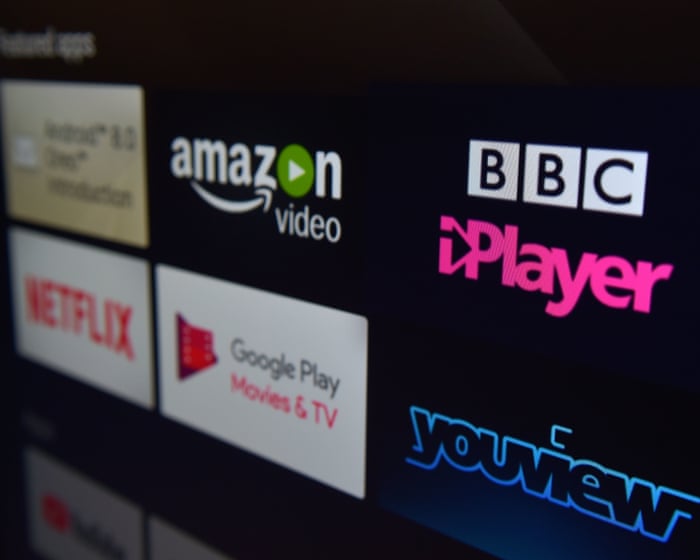I have a trip to Florence coming up, and all I want to do is rewatch Medici. The 2016 historical drama follows the rise of Florence’s powerful banking dynasty and the birth of the Renaissance. A few years ago, I could have just logged into Netflix and found it there, along with countless other acclaimed and niche titles. But when I search for the show in 2025, Netflix’s link leads to a dead end. It’s not on HBO Max, Disney+, Apple TV+, or any smaller platforms either. Amazon Prime offers it—but only if I buy all three seasons (or 24 individual episodes), which could vanish from my library without warning.
Growing up in Sweden, home of The Pirate Bay, I suddenly feel a pang of nostalgia for the wild days of digital piracy. And I’m not the only one.
(The Guardian’s journalism is independent. We may earn a commission if you buy something through an affiliate link.)
Back in the 2000s, torrenting was second nature to my teenage self. Want the new Coldplay album on your iPod? The Pirate Bay. The 1968 Romeo and Juliet film? The Pirate Bay. Everything was just a few clicks away. But as smartphones took over, so did Spotify—another Swedish innovation. The same country that birthed illegal torrenting also created its legal counterpart.
“Spotify would never have existed without The Pirate Bay,” Per Sundin, then head of Universal Music Sweden, said in 2011. Music piracy faded as people either tolerated ads or paid for subscriptions. And when Netflix arrived in Sweden in 2012, open talk of pirating movies and shows died down too. For just 79 SEK (£6) a month, you could access most major series and a wealth of award-winning films. Meanwhile, The Pirate Bay’s founders were arrested and jailed. As far as I was concerned, piracy was history.
But now, over a decade after The Pirate Bay trial, things are shifting again. On a rare warm summer day, I sit with fellow film critics by the old harbor—once a hub for merchants (and, some say, smugglers). With cold bigstrongs (that’s Swedish for pints) in hand, they rant about the “enshittification” of streaming—where platforms degrade their services in the name of profit. Netflix now costs at least 199 SEK (£15), and you need multiple subscriptions to watch what used to be available in one place. Many services now push ads even on paid plans. Regional locks force viewers to use VPNs. The average European household spends nearly €700 (£600) a year on three or more streaming subscriptions. People pay more and get less.
One critic admits anonymously: “I never stopped pirating, and my partner does it too if he can’t find the exact DVD edition he wants.” While some never quit, others are returning—this time to unofficial streaming sites. One popular app is legal but can access pirated streams through community add-ons. “Downloading is too complicated now,” says one viewer. “These sketchy streams might flood me with ads, but at least I don’t have to worry about viruses or getting caught.”
According to MUSO, a London-based piracy tracker, unlicensed streaming is now the main source of TV and film piracy. In Sweden, 25% of people admitted to pirating in 2024—a trend led by 15-24-year-olds. The golden age of easy, affordable streaming is fading, and for many, the high seas are calling again.In 2023, streaming accounted for 96% of content consumption. Piracy hit its lowest point in 2020 with 130 billion website visits, but by 2024, that number climbed to 216 billion. In Sweden, 25% of people surveyed admitted to pirating content in 2024—a trend largely driven by 15- to 24-year-olds. Piracy has returned, just under a different guise.
Streaming was meant to eliminate piracy, yet now it’s easier than ever. As Gabe Newell, co-founder of Valve (the company behind Steam, the world’s largest PC gaming platform), noted in 2011: “Piracy isn’t a pricing issue—it’s a service issue.” Today’s streaming crisis proves his point. With content scattered across platforms, prices rising, and video quality varying by browser, it’s no surprise some viewers are returning to piracy. Studios have carved out their own fiefdoms, walling off content and charging fees to access it—creating artificial scarcity in a digital age that promised endless abundance.
Whether piracy today stems from rebellion or frustration hardly matters—the trend is growing regardless. As streaming fractures into competing territories, more viewers are turning to illegal alternatives. The Medici banking dynasty understood the power of access: a client could travel from Rome to London and still access their funds, thanks to a system built on trust and interoperability. If today’s studios want to weather this storm, they might need to relearn that lesson.
FAQS
### **FAQs About Streaming Services Struggling Financially & Piracy**
#### **Basic Questions**
**1. Why are streaming services struggling financially?**
Many streaming platforms are losing money due to high production costs, licensing fees, and fierce competition, leading to price hikes and reduced content.
**2. How do rising subscription costs push people toward piracy?**
When prices go up but content quality or quantity drops, viewers look for free alternatives to avoid paying more for less.
**3. What does “content shrinking” mean?**
It refers to streaming services removing shows/movies to cut costs, making their libraries smaller over time.
**4. Is piracy really increasing because of streaming issues?**
Yes, studies show piracy rises when legal options become too expensive or inconvenient.
**5. Which streaming services are most affected?**
Netflix, Disney+, and Warner Bros. Discovery have faced financial struggles, leading to price increases and content cuts.
—
#### **Advanced Questions**
**6. How do password-sharing crackdowns affect piracy?**
Strict enforcement pushes users who shared accounts to either pay more or turn to piracy instead.
**7. Are there legal consequences for streaming pirated content?**
Yes, in many countries, piracy can lead to fines, legal action, or restricted internet access.
**8. Do ads in cheaper streaming tiers reduce piracy?**
Sometimes, but if ads are excessive or content is still limited, users may still prefer piracy.
**9. How do regional restrictions contribute to piracy?**
If a show isn’t available legally in a viewer’s country, they may pirate it instead.
**10. What are some alternatives to piracy when prices rise?**
– Switching to cheaper ad-supported tiers
– Sharing costs with family
– Using free legal services
– Waiting for sales or bundling deals
—
#### **Practical Tips & Examples**
**11. What can streaming services do to reduce piracy?**
– Offer fair pricing
– Keep a strong content library
– Avoid excessive ads in paid plans
– Make content globally available
**12. Are there any success stories of reducing piracy?**
Spotify and Steam reduced music/game piracy by offering affordable, convenient legal options.




